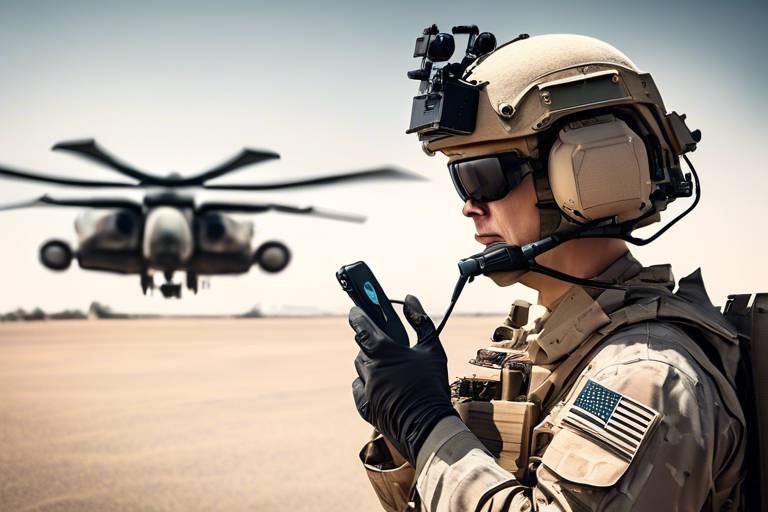Military Applications of Smart Textiles for Enhanced Performance
In an era where technology is evolving at lightning speed, the military is not one to lag behind. The integration of smart textiles into military applications is revolutionizing how soldiers operate on the battlefield. Imagine wearing a uniform that not only shields you from the elements but also monitors your health and communicates vital information in real-time. This is not science fiction; it’s the reality of smart textiles. These advanced materials combine traditional fabrics with cutting-edge technology to create an environment where performance, safety, and efficiency are significantly enhanced.
The military's adoption of smart textiles is akin to upgrading from a flip phone to a smartphone. Just as smartphones have transformed communication, smart textiles are transforming soldier capabilities. These textiles are designed to respond to environmental conditions, monitor physiological data, and even provide communication functionalities, all while maintaining comfort and mobility. This article delves into the fascinating world of smart textiles, exploring their definitions, benefits, types, health monitoring capabilities, environmental adaptation, integration with wearable technology, challenges, future trends, and real-world applications.
So, what exactly are smart textiles? At their core, smart textiles are fabrics that have been engineered to incorporate technology, allowing them to perform functions beyond traditional textiles. These functions can include sensing environmental changes, communicating data, and even harvesting energy. The development of smart textiles involves a blend of materials science, electronics, and textile engineering. The result? Fabrics that can react to stimuli, monitor conditions, and provide feedback, creating a dynamic interface between the soldier and their environment.
The benefits of smart textiles for soldiers are profound. First and foremost, they offer enhanced comfort. Imagine a uniform that adjusts to your body temperature, keeping you cool in the heat and warm in the cold. This is achieved through materials that can regulate moisture and temperature, ensuring that soldiers remain focused on their mission rather than their discomfort. Moreover, smart textiles improve situational awareness. With integrated sensors, soldiers can receive real-time data about their surroundings, enhancing decision-making processes and operational effectiveness.
Another critical advantage is health monitoring. Smart textiles can track vital signs such as heart rate, body temperature, and even stress levels. This capability allows for proactive health management, enabling medics to respond swiftly to potential medical emergencies. In essence, the integration of these textiles leads to a more resilient and effective fighting force.
Smart textiles come in various forms, each tailored for specific military applications. These can be categorized based on their functionalities:
- Sensing Textiles: Fabrics embedded with sensors that monitor environmental conditions and physiological data.
- Heating Textiles: Materials that provide warmth through embedded heating elements, ideal for cold-weather operations.
- Communication Textiles: Fabrics that facilitate communication between soldiers and command centers, ensuring seamless information flow.
One of the most groundbreaking features of smart textiles is their ability to monitor health in real-time. These textiles can collect data on vital signs, which can be transmitted to medical personnel for immediate assessment. This capability is crucial for injury prevention and timely medical response. For instance, if a soldier's heart rate spikes unexpectedly, alerts can be sent to medics, allowing them to intervene before a serious issue arises. This real-time data collection not only enhances individual soldier safety but also contributes to overall mission success.
Smart textiles are designed to adapt to various environmental conditions. Whether it’s extreme heat, cold, or humidity, these textiles can provide insulation, moisture control, and temperature regulation. This adaptability is akin to having a personal climate control system built right into your uniform. By optimizing comfort and performance, soldiers can maintain their focus and effectiveness, regardless of the conditions they face.
The synergy between smart textiles and wearable technology is another exciting aspect of military applications. When smart textiles are combined with devices like smartwatches or fitness trackers, the potential for data collection and communication expands exponentially. This integration allows for a comprehensive overview of a soldier’s health and performance metrics, facilitating better decision-making and operational effectiveness. Imagine a soldier receiving real-time updates about their physical state while on a mission—this is the future of military operations.
Despite the promising advantages, smart textiles are not without their challenges. Durability is a significant concern; textiles must withstand harsh conditions without compromising their functionality. Additionally, the cost of developing and implementing these advanced materials can be prohibitive. Scalability is another issue, as mass production of smart textiles requires significant resources and infrastructure. Ongoing research aims to address these limitations and pave the way for broader adoption in military settings.
The future of smart textiles in the military looks bright, with advancements in nanotechnology and materials science opening new doors. Innovations such as self-repairing fabrics and enhanced energy harvesting capabilities may soon become commonplace. As these technologies evolve, we can expect to see even more sophisticated applications that further enhance soldier performance and safety in the field.
Real-world applications of smart textiles in military settings provide compelling evidence of their effectiveness. For example, the U.S. Army has been experimenting with uniforms that incorporate smart sensors to monitor soldier health during training exercises. These case studies highlight the versatility and potential of smart textiles, showcasing how they can transform military operations for the better.
Q: What are smart textiles?
A: Smart textiles are fabrics that integrate technology to perform functions such as sensing, communication, and energy harvesting.
Q: How do smart textiles benefit soldiers?
A: They enhance comfort, improve situational awareness, and enable real-time health monitoring, ultimately leading to better operational effectiveness.
Q: What challenges do smart textiles face?
A: Challenges include durability, cost, and scalability, which ongoing research aims to address.
Q: What is the future of smart textiles in the military?
A: The future looks promising with advancements in nanotechnology and materials science, leading to more sophisticated applications.
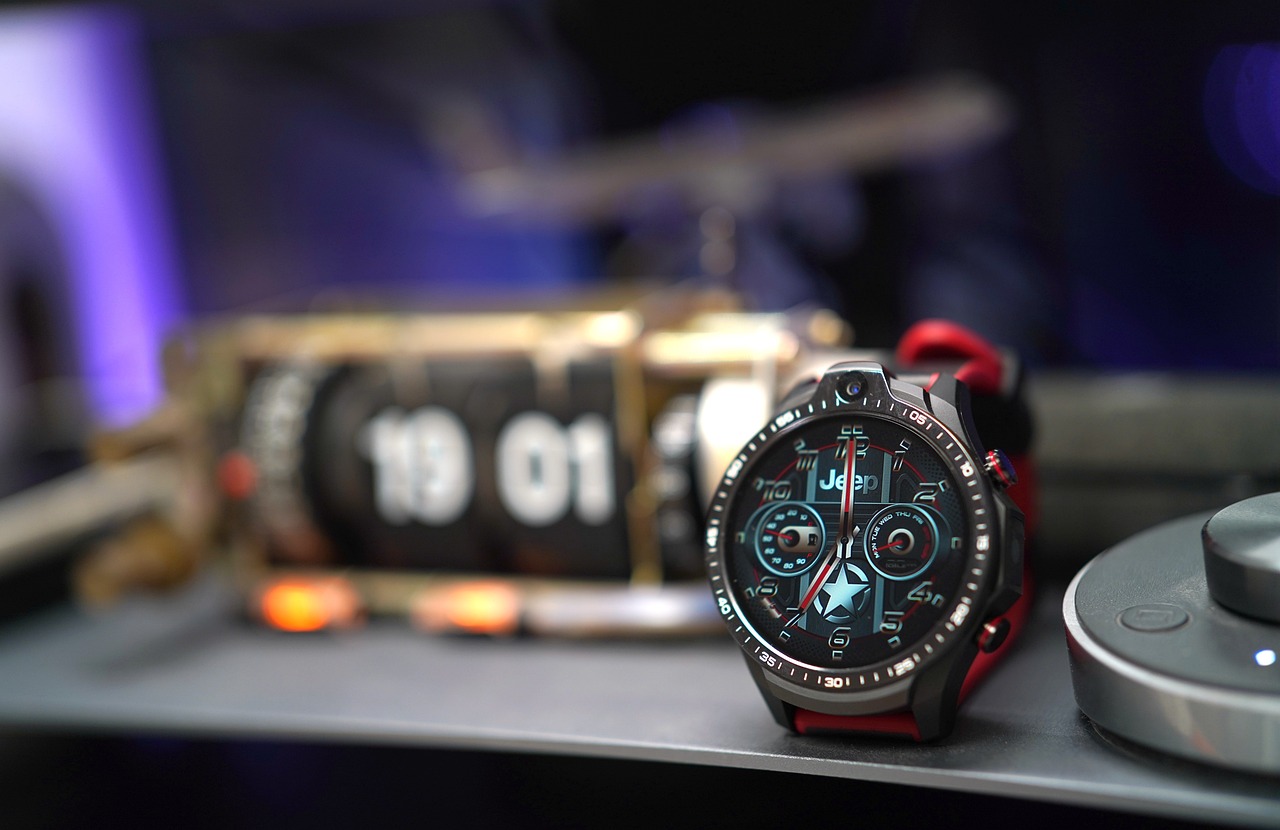
Introduction to Smart Textiles
Have you ever imagined wearing clothes that could do more than just keep you warm or look stylish? Smart textiles are revolutionizing the way we think about fabric, merging the world of fashion with cutting-edge technology. These innovative materials are not just about aesthetics; they integrate advanced functionalities that can sense, communicate, and even harvest energy. Imagine a uniform that can monitor a soldier's vital signs while also providing real-time data about their environment—this is the future that smart textiles promise.
At the core of smart textiles lies a fascinating blend of materials science and engineering. These fabrics are embedded with sensors and electronic components that allow them to interact with their surroundings. For instance, some smart textiles can detect changes in temperature, humidity, or even the wearer's heart rate. This integration of technology into textiles is not just a gimmick; it's a game-changer, especially in military applications where every second counts and information can be a matter of life and death.
So, what exactly defines smart textiles? They can be categorized into two main types: passive and active smart textiles. Passive smart textiles react to environmental stimuli but do not actively change their properties. For example, a fabric that changes color based on temperature is considered passive. On the other hand, active smart textiles can alter their state or properties in response to external conditions. Think of a jacket that can heat itself up when the temperature drops—now that's active!
In military settings, the potential applications of smart textiles are vast. They can enhance not only individual soldier performance but also overall operational efficiency. As we delve deeper into the benefits and types of smart textiles in the upcoming sections, it’s essential to understand the science behind these innovations. From the materials used to the technology integrated, smart textiles are paving the way for a new era in military gear. The ability to gather real-time data, adapt to environmental changes, and improve health monitoring could redefine how soldiers operate on the battlefield.
- Integration of technology: Smart textiles incorporate sensors and electronic components.
- Types of smart textiles: Classified into passive and active categories based on their functionalities.
- Military applications: Enhancing soldier performance and operational efficiency.
As we continue this exploration, we'll uncover how these remarkable materials are not just about innovation but also about enhancing safety and effectiveness in military operations. The future of military attire is not just about fabric; it's about smart solutions that can save lives and improve mission outcomes.

Benefits for Soldiers
The integration of smart textiles into military gear is not just a futuristic concept; it's a game-changer that brings tangible benefits to soldiers in the field. Imagine a uniform that not only protects but also enhances a soldier's capabilities. This is the reality that smart textiles offer, and the advantages are numerous and compelling.
One of the most significant benefits of smart textiles is enhanced comfort. Traditional military uniforms can be heavy and restrictive, leading to fatigue during long missions. Smart textiles, however, are designed to be lightweight and breathable, allowing for greater mobility and reducing the physical strain on soldiers. This increased comfort can lead to improved focus and performance, enabling soldiers to concentrate on their tasks rather than their clothing.
Moreover, smart textiles contribute to improved situational awareness. With embedded sensors, these fabrics can collect and transmit data about the environment, such as temperature, humidity, and even potential threats. For instance, a soldier wearing a smart uniform could receive real-time alerts about changes in weather conditions or incoming enemy activity, allowing for quicker and more informed decision-making. This ability to stay informed can make a critical difference in high-stakes situations.
Another key benefit is the health monitoring capabilities of smart textiles. These advanced fabrics can track vital signs such as heart rate, body temperature, and even hydration levels. This real-time health data is invaluable for maintaining soldier well-being, especially during intense operations where physical demands are high. By continuously monitoring their physiological state, soldiers can receive alerts for potential health issues before they escalate into serious problems. This proactive approach to health management can significantly reduce the risk of injuries and enhance overall operational effectiveness.
Additionally, smart textiles can offer environmental adaptation. Soldiers often operate in extreme conditions, from scorching deserts to freezing mountains. Smart textiles can adjust their properties to provide insulation or moisture control, ensuring that soldiers remain comfortable and focused regardless of the climate. For example, a smart uniform might wick away sweat in hot weather, while providing thermal insulation in colder environments. This adaptability not only enhances comfort but also boosts performance by allowing soldiers to operate efficiently in diverse settings.
Lastly, the integration of smart textiles with wearable technology creates a seamless flow of information that can significantly enhance operational effectiveness. Imagine a soldier equipped with a smart uniform that communicates with a smartwatch or heads-up display, providing critical data at a glance. This synergy can streamline communication and data collection, enabling soldiers to make faster, more informed decisions on the battlefield. The potential for improved teamwork and coordination is immense, as all members of a unit can share and receive vital information in real-time.
In summary, smart textiles offer a multitude of benefits that can transform the way soldiers operate in the field. From enhanced comfort and situational awareness to health monitoring and environmental adaptation, these innovative materials are paving the way for a new era of military performance. As technology continues to evolve, the potential for smart textiles to further enhance soldier capabilities is boundless.
- What are smart textiles? Smart textiles are fabrics that have been engineered to incorporate technology, allowing them to sense, respond, and adapt to various stimuli.
- How do smart textiles improve soldier performance? They enhance comfort, provide real-time health monitoring, and improve situational awareness, all of which contribute to better overall performance.
- Can smart textiles adapt to different environments? Yes, smart textiles can adjust their properties to provide insulation, moisture control, and temperature regulation based on environmental conditions.
- What is the future of smart textiles in the military? The future looks promising, with ongoing advancements in nanotechnology and materials science expected to further enhance their capabilities.

Types of Smart Textiles
When it comes to smart textiles, the variety is as diverse as the needs of the military itself. These innovative fabrics are not just your ordinary materials; they are engineered to perform specific functions that enhance the capabilities of soldiers on the field. Let's dive into the different types of smart textiles and see how each category serves a unique purpose.
First up are sensing textiles. These fabrics are embedded with sensors that can detect various environmental and physiological parameters. Imagine a uniform that can monitor a soldier's heart rate or body temperature in real-time! This technology not only helps in keeping track of a soldier's health but also provides critical data that can be used to assess the conditions of the battlefield. For example, sensing textiles can alert commanders if a soldier is under extreme stress or has sustained an injury, allowing for quicker medical response.
Next, we have heating textiles. These fabrics are designed to provide warmth in extreme cold conditions. By integrating heating elements into the fabric, soldiers can maintain their core body temperature, which is essential for performance and safety. Think of it as wearing a cozy blanket that actively warms you up while you're on a mission in freezing temperatures. This kind of textile can significantly reduce the risk of hypothermia and keep soldiers focused on their tasks rather than on their discomfort.
Another fascinating category is communication textiles. These textiles are equipped with communication technologies that allow soldiers to stay connected even in the most challenging environments. Imagine a tactical vest that not only holds gear but also enables seamless communication with team members. This capability can be a game-changer, allowing for better coordination during operations and enhancing overall mission effectiveness.
Moreover, we have energy harvesting textiles. These innovative materials can capture and store energy from the environment, such as solar power or kinetic energy from movement. This feature can be incredibly beneficial in the field, where access to power sources is limited. Soldiers can charge their devices on the go, ensuring that they remain operational without the worry of running out of battery life.
In addition to these categories, there are also adaptive textiles. These materials can change their properties in response to environmental conditions. For instance, they can become more breathable in hot weather or provide additional insulation when temperatures drop. This adaptability is crucial for soldiers who operate in varying climates and need their gear to perform consistently.
To summarize, the types of smart textiles available for military applications include:
- Sensing Textiles
- Heating Textiles
- Communication Textiles
- Energy Harvesting Textiles
- Adaptive Textiles
Each type of smart textile brings its own set of advantages, contributing to the overarching goal of enhancing soldier performance, safety, and operational efficiency. The integration of these advanced materials into military gear signifies a leap forward in how we equip our armed forces, making them more effective and resilient in the face of challenges.
What are smart textiles?
Smart textiles are fabrics that have been engineered to incorporate technology, enabling them to perform various functions such as sensing, heating, and communication.
How do sensing textiles work?
Sensing textiles contain embedded sensors that monitor physiological data like heart rate and body temperature, providing real-time health information.
Can heating textiles be used in all climates?
Heating textiles are specifically designed for cold environments, but they may not be suitable for hot climates where breathability is more important.
What is the benefit of energy harvesting textiles?
Energy harvesting textiles allow soldiers to generate and store energy from their surroundings, ensuring their devices remain charged during missions.
Are adaptive textiles customizable?
Adaptive textiles can be engineered to respond to specific environmental conditions, making them versatile for various military applications.

Health Monitoring Capabilities
In the high-stakes world of military operations, the health and well-being of soldiers are paramount. This is where smart textiles truly shine, offering revolutionary health monitoring capabilities that can make a significant difference on the battlefield. Imagine a uniform that not only protects but also serves as a personal health assistant, constantly tracking vital signs and physiological data in real-time. This integration of technology and fabric allows for proactive health management, ensuring that soldiers can perform at their best while minimizing health risks.
Smart textiles equipped with advanced sensors can monitor a variety of health metrics, including heart rate, body temperature, and even hydration levels. These metrics provide crucial insights into a soldier's physical state, enabling timely interventions when necessary. For instance, if a soldier's heart rate spikes beyond a safe threshold, the smart textile can alert the command center, prompting immediate medical attention. This capability is particularly vital in combat scenarios where every second counts.
Moreover, the data collected by these smart textiles can be analyzed to identify patterns and trends in a soldier's health over time. This long-term monitoring can help in predicting potential health issues before they escalate into serious problems. For example, consistent monitoring may reveal that a soldier is experiencing fatigue or stress levels that exceed normal ranges, allowing for adjustments in duty assignments or the implementation of recovery protocols.
To illustrate the effectiveness of smart textiles in health monitoring, consider the following table:
| Health Metric | Importance | Smart Textile Functionality |
|---|---|---|
| Heart Rate | Indicates cardiovascular stress and overall fitness | Real-time monitoring with alerts for abnormalities |
| Body Temperature | Helps in detecting fever or hypothermia | Continuous tracking with notifications for critical changes |
| Hydration Levels | Prevents dehydration, critical for performance | Sensors that assess moisture levels in the body |
Additionally, the implications of health monitoring extend beyond immediate medical responses. It fosters a culture of health awareness among soldiers, encouraging them to take proactive steps in managing their well-being. This shift towards a more health-conscious military can lead to improved morale and operational effectiveness, as soldiers feel supported and valued.
As the technology behind smart textiles continues to evolve, we can expect even more sophisticated health monitoring capabilities. Future innovations may include the integration of biomarkers that can detect changes in the body at a molecular level, providing insights that are currently beyond our reach. Imagine a fabric that can not only monitor your heart rate but also detect early signs of infection or other health issues. The potential is truly exciting!
- What types of health metrics can smart textiles monitor? Smart textiles can monitor a range of metrics, including heart rate, body temperature, hydration levels, and even muscle strain.
- How do smart textiles alert medical personnel? They utilize wireless communication to send real-time data to command centers or wearable devices, ensuring immediate attention if needed.
- Are smart textiles comfortable to wear? Yes, they are designed to be lightweight and breathable, ensuring that soldiers can wear them without discomfort during operations.
- What are the future trends in health monitoring with smart textiles? Future trends include the integration of advanced biomarkers and AI analytics to provide deeper insights into soldier health.
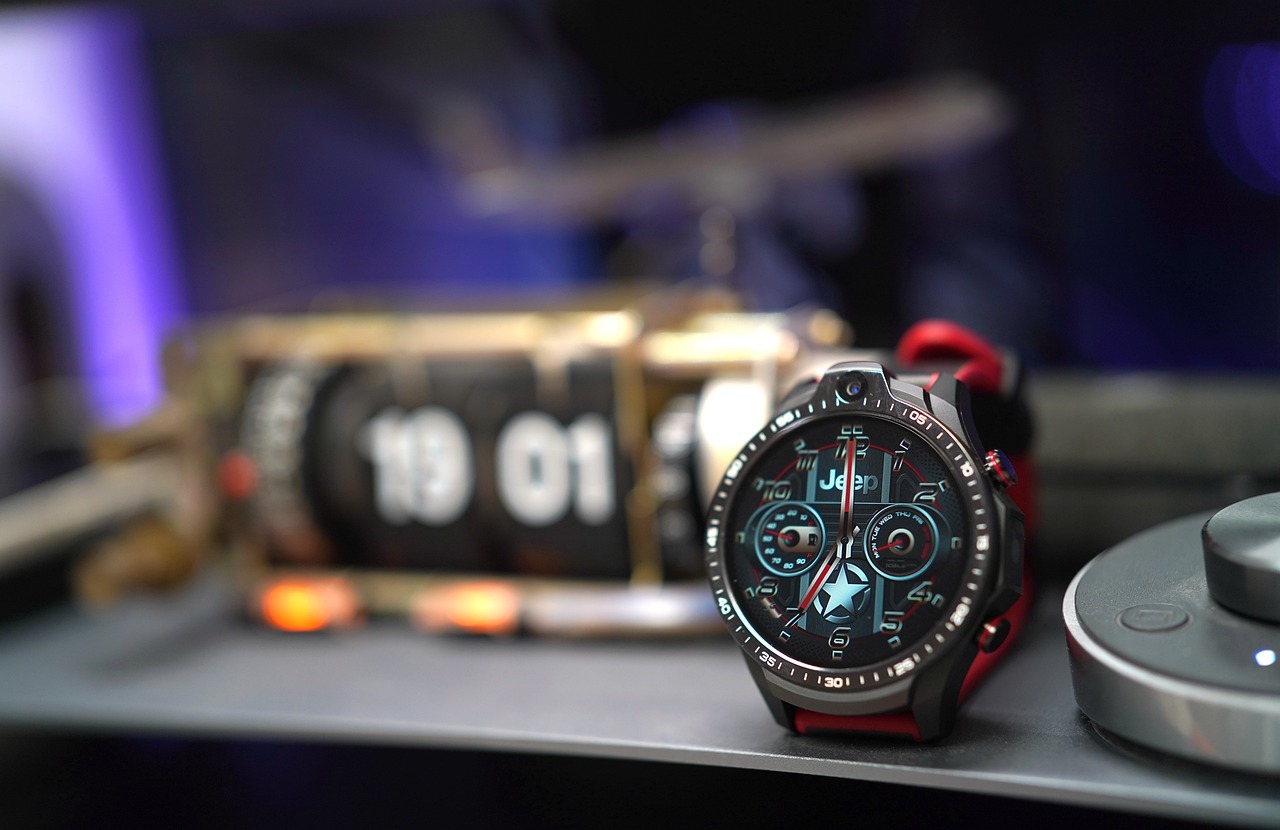
Environmental Adaptation
When it comes to military operations, environmental conditions can make or break a mission. Imagine a soldier navigating through a dense jungle, where humidity is high and temperatures soar. Now, picture that same soldier wearing a uniform that can adapt to these extreme conditions. This is where smart textiles shine, offering features that enhance performance by responding dynamically to the surrounding environment. These advanced materials are engineered to provide insulation, moisture control, and temperature regulation, all of which are crucial for maintaining soldier comfort and effectiveness in the field.
One of the most impressive aspects of smart textiles is their ability to regulate temperature. For instance, during hot weather, these textiles can wick away moisture, keeping the soldier dry and cool. Conversely, in cold environments, they can trap heat, ensuring that the wearer remains warm. This adaptability not only enhances comfort but also improves focus and operational readiness. Soldiers can concentrate on their tasks rather than being distracted by discomfort caused by extreme weather conditions.
Moreover, smart textiles can be equipped with sensors that monitor the wearer's body temperature and perspiration levels. This data can be crucial for assessing the soldier's physical state and preventing heat-related illnesses, which can be life-threatening. The integration of such technology allows for real-time feedback, enabling commanders to make informed decisions about troop deployment and safety. Think of it as having a personal assistant that not only keeps you comfortable but also looks out for your health!
To illustrate the benefits of environmental adaptation, consider the following table that outlines key features of smart textiles:
| Feature | Functionality | Benefits |
|---|---|---|
| Temperature Regulation | Adapts to hot or cold conditions | Maintains optimal body temperature |
| Moisture Control | Wicks sweat away from the body | Prevents overheating and discomfort |
| Insulation | Traps heat in cold environments | Enhances warmth and reduces risk of hypothermia |
As we move forward, the potential for smart textiles to revolutionize military operations is immense. With ongoing research and development, we can expect even more sophisticated adaptations that will cater to the unique challenges faced by soldiers in various environments. The goal is clear: to create a second skin that not only protects but also enhances the capabilities of our military personnel.
- What are smart textiles? Smart textiles are fabrics that have been enhanced with technology to provide functionalities such as sensing, communication, and energy harvesting.
- How do smart textiles help soldiers? They enhance comfort, improve situational awareness, and provide health monitoring, which translates into better performance on the field.
- Can smart textiles adapt to different weather conditions? Yes, they can regulate temperature, manage moisture, and provide insulation depending on the environmental conditions.
- What is the future of smart textiles in the military? The future looks promising with advancements in materials science and nanotechnology, leading to even more innovative applications.

Integration with Wearable Technology
In the ever-evolving landscape of military operations, the convergence of smart textiles and wearable technology is creating a paradigm shift in how soldiers interact with their gear and environment. Imagine a scenario where a soldier's uniform not only protects them but also communicates vital information in real-time. This integration is not just a futuristic dream; it's becoming a reality. Smart textiles embedded with sensors can collect and transmit data seamlessly to wearable devices, such as smartwatches or heads-up displays, enhancing the soldier's situational awareness and decision-making capabilities.
The synergy between these technologies allows for a continuous stream of information that can be critical during missions. For example, a soldier wearing a smart uniform equipped with sensors can monitor their heart rate, body temperature, and even hydration levels. This data is transmitted to their smartwatch, which can alert them if any of these metrics fall outside a safe range. Such real-time monitoring is essential for maintaining optimal performance and ensuring the soldier's safety in high-stress environments.
Moreover, this integration facilitates communication between team members. Imagine being in a high-stakes situation where every second counts. With smart textiles, a soldier can send and receive messages or alerts without having to fumble with a device. Instead, they can rely on discreet notifications through vibrations or visual cues on their wearable tech. This streamlined communication can make all the difference in critical moments, allowing teams to coordinate effectively and respond swiftly to changing circumstances.
Additionally, the data collected by smart textiles and wearables can be invaluable for post-mission analysis. By reviewing the physiological data and environmental conditions during a mission, military analysts can identify patterns and make informed decisions about training, equipment, and strategies. This feedback loop not only enhances individual soldier performance but also contributes to the overall effectiveness of military operations.
However, integrating smart textiles with wearable technology is not without its challenges. Issues such as battery life, data security, and the durability of materials in harsh environments must be addressed. Ongoing research is focused on developing more efficient power sources and robust materials that can withstand the rigors of military use. As these challenges are overcome, the potential for enhanced soldier performance through this integration will only grow.
In conclusion, the integration of smart textiles with wearable technology is revolutionizing military operations. By providing real-time data, enhancing communication, and contributing to post-mission analysis, this synergy is paving the way for a new era of soldier performance and safety. As technology continues to advance, we can expect even more innovative applications that will further enhance the effectiveness of our military personnel.
- What are smart textiles? Smart textiles are fabrics that have been designed to include technology that enables them to sense, respond, and communicate.
- How do smart textiles improve soldier performance? They enhance comfort, situational awareness, and health monitoring, leading to improved operational effectiveness.
- What challenges do smart textiles face? Durability, cost, and scalability are some of the key challenges that need to be addressed for widespread adoption.
- How does wearable technology enhance military operations? Wearable technology allows for real-time data collection and communication, improving decision-making and operational effectiveness.

Challenges and Limitations
The integration of smart textiles into military applications is not without its hurdles. While the potential benefits are immense, there are several challenges and limitations that need to be addressed to fully realize their capabilities. One of the primary concerns is durability. Military environments are often harsh, subjecting gear to extreme conditions, including mud, water, and physical stress. Smart textiles must not only function effectively but also withstand these conditions over time. The materials used in these textiles need to be robust enough to handle the rigors of military operations without compromising functionality.
Another significant limitation is cost. The development and production of smart textiles involve advanced materials and technology, which can result in high manufacturing costs. This raises questions about the feasibility of widespread adoption within military budgets. As much as military organizations desire cutting-edge technology, they also have to consider the economic implications. If smart textiles are prohibitively expensive, they may not be able to equip all soldiers uniformly, leading to disparities in access to these advanced materials.
Furthermore, there are scalability issues. While prototypes and small-scale implementations may show promise, scaling these technologies for large military units poses logistical challenges. This includes not only the production of enough units but also the training of personnel to use and maintain these high-tech fabrics. Without a clear pathway for scalability, the benefits of smart textiles may remain limited to small pilot programs rather than becoming standard issue across military forces.
Additionally, there are technical challenges related to integration. Smart textiles often require complex electronics and sensors, which can complicate their use in the field. The potential for malfunctions or failures in critical moments raises concerns about reliability. Soldiers need to trust their gear implicitly, and any uncertainty regarding the functionality of smart textiles could lead to hesitancy in their use. Hence, rigorous testing and validation processes are essential to ensure that these textiles can be depended upon in high-stakes environments.
Lastly, data security is a paramount concern. Smart textiles that collect and transmit data can be vulnerable to cyber threats. Protecting sensitive information regarding soldier health and operational status is crucial, and any breach could have dire consequences. Therefore, developing robust security protocols and encryption methods must be part of the design process for smart textiles.
In summary, while the potential of smart textiles in military applications is exciting, addressing the is essential for their successful implementation. Ongoing research and innovation are critical to overcoming these obstacles, ensuring that soldiers can benefit from the advancements in textile technology without compromising their safety or operational effectiveness.
- What are smart textiles?
Smart textiles are fabrics that have been engineered to incorporate technology, allowing them to sense, react, and adapt to environmental changes. - How do smart textiles benefit soldiers?
They enhance comfort, improve situational awareness, and provide health monitoring, which can lead to better performance in the field. - What are the main challenges faced by smart textiles?
The main challenges include durability, cost, scalability, technical integration, and data security. - Are smart textiles currently in use in the military?
Yes, there are ongoing pilot programs and research initiatives exploring the use of smart textiles in various military applications.
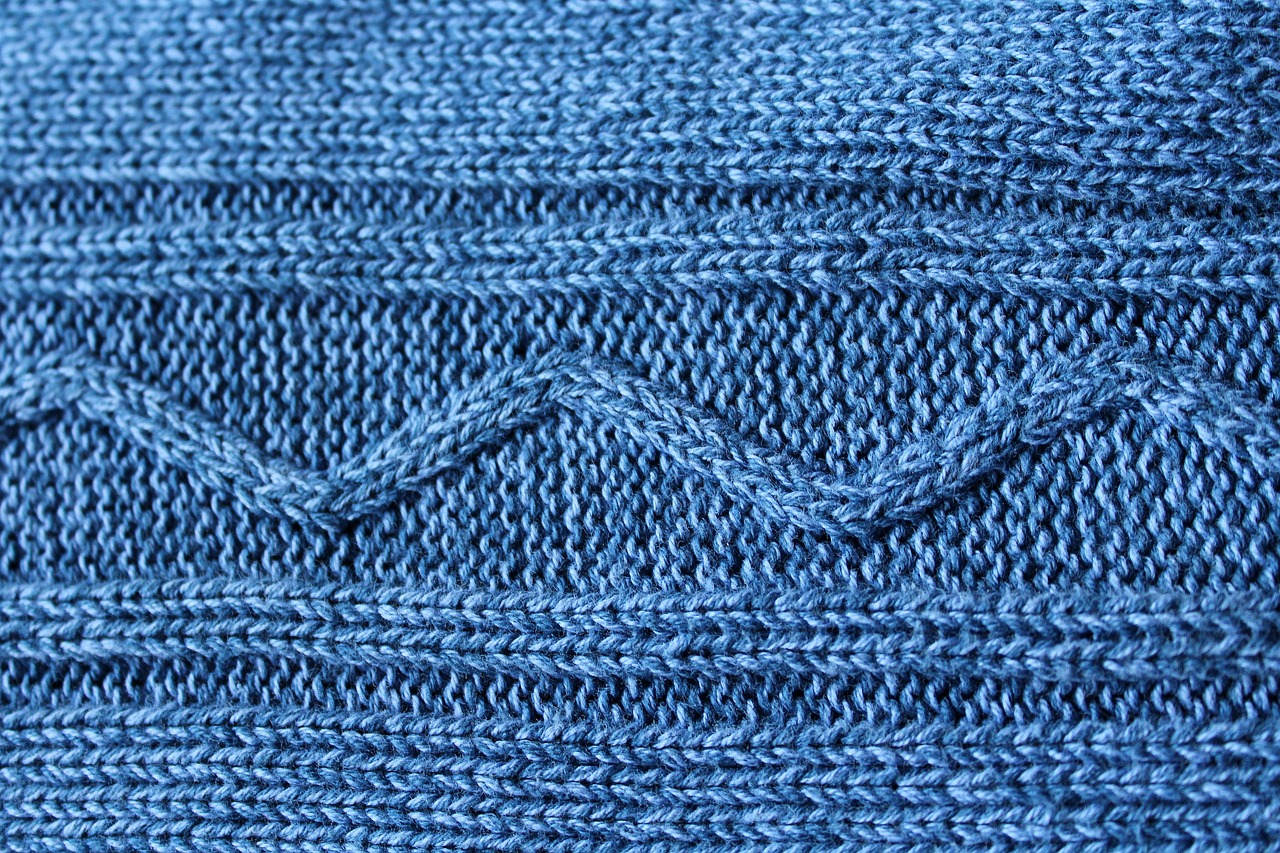
Future Trends in Military Textiles
The future of smart textiles in military applications is not just a fleeting trend; it's a revolution that promises to redefine how soldiers operate on the battlefield. As we stand on the brink of technological breakthroughs, the integration of nanotechnology and advanced materials science is set to propel military textiles into new realms of functionality and efficiency. Imagine a fabric that not only protects but also enhances the soldier's capabilities. This is no longer science fiction; it’s becoming a reality.
One of the most exciting developments on the horizon is the use of self-healing materials. These textiles can repair themselves when damaged, significantly extending the lifespan of military gear. Picture a scenario where a soldier's uniform sustains a tear during a mission. With self-healing technology, the fabric could autonomously mend itself, ensuring the soldier remains protected without the need for immediate repairs. This innovation could lead to substantial cost savings and reduce the logistical burden of replacing damaged equipment.
Moreover, the incorporation of smart sensors into textiles is evolving rapidly. These sensors will not only monitor a soldier's vital signs but will also analyze environmental conditions. For instance, a soldier wearing a smart uniform could receive real-time feedback about their hydration levels or exposure to hazardous materials. The data collected could be transmitted to command centers, allowing for informed decision-making and timely medical responses. This level of situational awareness is critical in high-stakes environments.
Another trend gaining traction is the development of adaptive camouflage technologies. Future military uniforms could change color or pattern based on the surrounding environment, providing enhanced concealment. This technology draws inspiration from nature, where animals like chameleons can alter their appearance to blend in with their surroundings. Such advancements could give soldiers a tactical advantage, making them less detectable to enemies.
| Innovation | Description | Potential Impact |
|---|---|---|
| Self-Healing Materials | Fabrics that can repair themselves after damage. | Increased durability and reduced replacement costs. |
| Smart Sensors | Integrated sensors that monitor health and environment. | Enhanced situational awareness and medical response. |
| Adaptive Camouflage | Uniforms that change color/pattern to match surroundings. | Improved stealth and tactical advantage. |
Furthermore, as we embrace the era of the Internet of Things (IoT), the connectivity of smart textiles will play a pivotal role. Imagine a network of soldiers whose uniforms communicate with each other and with command centers, sharing vital information in real-time. This interconnectedness could enhance strategic planning and execution, ensuring that every soldier is informed and prepared for any situation.
However, as we look to the future, it's essential to acknowledge the challenges that come with these advancements. Issues such as cost, scalability, and durability of these innovative textiles must be addressed. Ongoing research is crucial to overcoming these hurdles, ensuring that the benefits of smart textiles can be fully realized in military settings.
In conclusion, the future trends in military textiles are poised to revolutionize how soldiers operate, providing them with enhanced protection, improved health monitoring, and greater tactical advantages. As technology continues to advance, we can only imagine the incredible possibilities that lie ahead. The integration of smart textiles into military applications is not just about fabric; it's about empowering soldiers to perform at their best, even in the most challenging environments.
- What are smart textiles?
Smart textiles are fabrics that have been engineered to include advanced technology, allowing them to sense, respond, and adapt to environmental conditions. - How do smart textiles benefit soldiers?
They provide enhanced comfort, improved situational awareness, and better health monitoring, which can lead to better operational effectiveness. - What are some future trends in military textiles?
Future trends include self-healing materials, smart sensors for health monitoring, and adaptive camouflage technologies. - What challenges do smart textiles face?
Challenges include issues related to cost, durability, and scalability, which ongoing research aims to address.
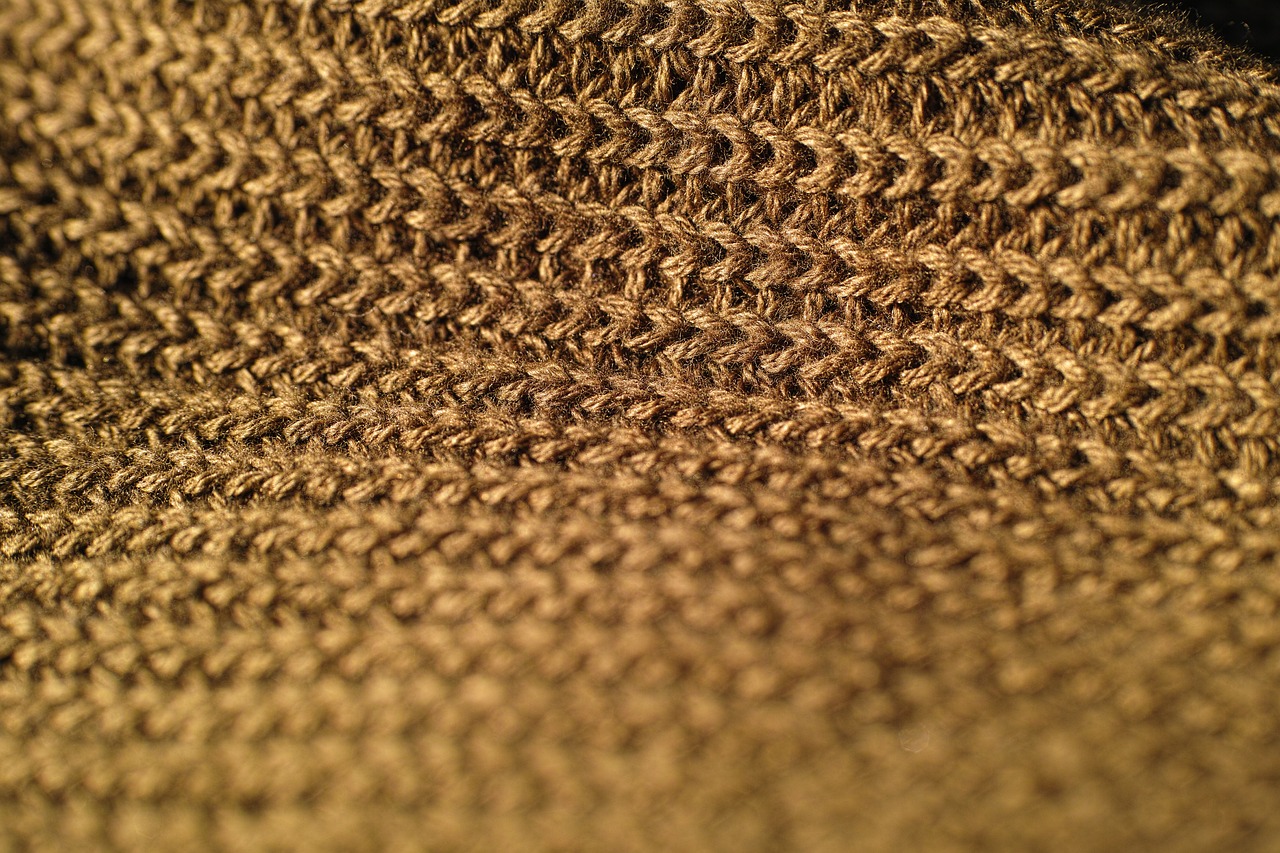
Case Studies and Applications
In recent years, the integration of smart textiles into military applications has gained significant traction, leading to groundbreaking advancements in soldier performance and safety. One of the most notable case studies comes from the U.S. Army, which has successfully implemented smart uniforms embedded with sensors that continuously monitor soldiers' vital signs. These uniforms, known as Integrated Soldier System (ISS), not only track heart rate and body temperature but also provide real-time data to command centers, enabling quick medical responses in the event of a health crisis.
Another remarkable application can be seen in the development of Phase Change Materials (PCMs) used in combat gear. These materials have the ability to absorb, store, and release heat, which helps regulate body temperature in extreme conditions. For instance, during a mission in Afghanistan, soldiers wearing PCM-infused clothing reported a significant decrease in heat stress, allowing them to maintain optimal performance levels even in sweltering temperatures. This case highlights how smart textiles can enhance operational effectiveness by addressing environmental challenges faced by soldiers.
Moreover, the U.S. Navy has been experimenting with smart textiles that incorporate electronic textiles (e-textiles) designed for communication purposes. These textiles enable soldiers to stay connected in the field without the need for bulky devices. For example, a recent exercise demonstrated how sailors could use their uniforms to send messages and receive updates directly through their clothing. This seamless integration of communication technology into everyday military attire not only boosts operational efficiency but also enhances situational awareness.
To provide a clearer understanding of these applications, the following table summarizes some key case studies and their outcomes:
| Case Study | Application | Outcome |
|---|---|---|
| U.S. Army ISS | Health Monitoring | Real-time vital sign tracking, improved medical response |
| PCM Combat Gear | Temperature Regulation | Reduced heat stress, enhanced performance in extreme conditions |
| U.S. Navy E-textiles | Communication | Improved connectivity, enhanced situational awareness |
Additionally, the British Army has been utilizing smart textiles in their Future Soldier Program. This initiative focuses on creating a modular combat uniform that adapts to various mission requirements. The smart textiles in this program not only provide protection against environmental hazards but also integrate with other wearable technologies, such as GPS and health monitoring devices. This holistic approach is paving the way for a new generation of soldiers who are better equipped to handle the complexities of modern warfare.
As we look toward the future, it's clear that the applications of smart textiles in military settings are just beginning to scratch the surface. With ongoing research and development, we can expect even more innovative solutions that will further enhance soldier safety, comfort, and effectiveness. The potential for smart textiles to revolutionize military operations is immense, and these case studies serve as a testament to their effectiveness in real-world scenarios.
- What are smart textiles? Smart textiles are fabrics that have been enhanced with technology to provide functionalities such as sensing, communication, and energy harvesting.
- How do smart textiles benefit soldiers? They offer improved comfort, better situational awareness, and enhanced health monitoring, which can lead to increased operational effectiveness.
- Can smart textiles adapt to different environments? Yes, many smart textiles are designed to provide insulation, moisture control, and temperature regulation based on environmental conditions.
- What challenges do smart textiles face? Key challenges include durability, cost, and scalability, which researchers are actively working to overcome.
Frequently Asked Questions
- What are smart textiles?
Smart textiles are innovative fabrics that incorporate advanced technology to perform functions beyond traditional textiles. They can sense, communicate, and even harvest energy, making them incredibly versatile for various applications, especially in military settings.
- How do smart textiles benefit soldiers?
Smart textiles enhance soldier performance by providing improved comfort, better situational awareness, and advanced health monitoring. These features help ensure soldiers are more effective in their operations, as they can focus on their tasks without being hindered by discomfort or health issues.
- What types of smart textiles are used in the military?
There are several types of smart textiles designed for military use, including those that offer sensing capabilities, heating elements, and communication functions. Each type is tailored to meet specific operational needs, ensuring soldiers have the best tools at their disposal.
- Can smart textiles monitor health?
Absolutely! Smart textiles can monitor vital signs and physiological data in real-time, which is crucial for managing soldier health. This capability can help in preventing injuries and ensuring timely medical responses when necessary.
- How do smart textiles adapt to environmental conditions?
Smart textiles are designed to adapt to varying environmental conditions by providing insulation, moisture control, and temperature regulation. This adaptability enhances soldier performance in diverse climates, ensuring they stay comfortable and focused on their missions.
- What is the relationship between smart textiles and wearable technology?
The integration of smart textiles with wearable technology enhances data collection and communication. This synergy allows for better decision-making and operational effectiveness, as soldiers can receive real-time data and alerts directly from their clothing.
- What challenges do smart textiles face?
Despite their advantages, smart textiles face challenges such as durability, cost, and scalability. Ongoing research aims to address these limitations, paving the way for more widespread adoption in military settings.
- What does the future hold for smart textiles in the military?
The future of smart textiles in the military looks promising, with advancements in nanotechnology and materials science. These innovations could lead to even more effective and multifunctional textiles, significantly impacting military operations.
- Are there any real-world applications of smart textiles in the military?
Yes, there are several real-world applications of smart textiles in military settings. Case studies demonstrate their effectiveness and versatility, showcasing successful implementations that have improved soldier performance and safety.



















